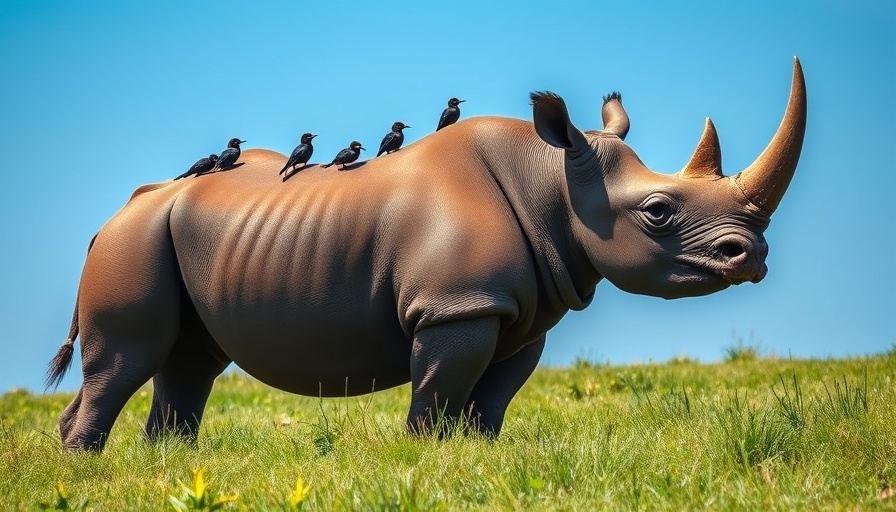
Urgent Call to Action: The Plight of Critically Endangered Species
As we stand at a crucial juncture for our planet's biodiversity, a recent study alarmingly reveals that over 10,000 species are teetering on the brink of extinction. Published in Nature Reviews Biodiversity, this report sheds light on the stark reality faced by our world’s most vulnerable species and underscores the urgent need for conservation efforts.
The Struggling Species: A Closer Look
According to the study, the staggering number of 10,443 species are critically endangered, a classification they earn when their populations draw perilously close to extinction due to factors like rapid declines, limited range, or alarmingly low numbers of mature individuals. Disturbingly, over 1,500 of these species, or around 15%, have fewer than 50 mature individuals remaining in the wild. Plants make up a significant portion of these struggling species, indicating that the crisis extends beyond just animals.

Rikki Gumbs, a research fellow at the Zoological Society of London, stresses that while the situation is dire, it is not too late for humanity to act. "It's our unsustainable behavior, such as deforestation and the introduction of invasive diseases, that drives these declines, and we have the power to change it,” she said.
Geographic Insights: The Nations at Risk
Where are these species predominantly found? A startling revelation from the study shows that just 16 countries are home to more than half of all critically endangered species. These nations span across geography from the Caribbean and South America to Madagascar and Southeast Asia, emphasizing the need for focused conservation efforts in these areas.
In Madagascar alone, 670 species are found nowhere else on Earth, showcasing the urgency of conservation in hotspots of biodiversity. In many cases, however, these species are endemic, which places the responsibility for their survival strongly in the hands of the respective countries' local efforts.
Small Islands, Big Impact: The Crisis in Hawai‘i
Islands pose significant extinction risks, with around 40% of critically endangered species residing on just 6% of the planet’s land surface. For example, Hawai‘i houses hundreds of critically endangered species, with some islands reporting that over half of their endemic plants face critical extinction risk. This has sparked local conservationists' efforts to protect these unique resources and make a stand against further habitat loss.
Rethinking Conservation: It’s Time for Action
The message is clear: nearly 30% of critically endangered species have not been reassessed in over a decade by the IUCN. These outdated evaluations make it difficult to gauge the current state of species at risk—decisions made today could mean the difference between survival and extinction for many of these creatures
As Robert Lacher Jr., a professor from Texas A&M University, aptly points out, it is essential to focus conservation initiatives in the countries that are home to the most threatened species. Now, more than ever, individuals and grassroots organizations must come together to advocate for policies that protect these endangered species and promote sustainable practices.
Conclusion: Join the Conservation Movement
The plight of critically endangered species is not just a scientific issue; it is a human one. Understanding the stakes involved opens up opportunities for each of us to take action. Local initiatives can engage community members, promote awareness on biodiversity, and encourage conservation practices that benefit both our wildlife and our environment.
As we face the challenges of climate change and habitat loss, let's band together to ensure that the story of extinction doesn't continue to unfold. Become involved with local wildlife organizations, volunteer for conservation projects, or simply educate yourself and others about the importance of preserving our planet's biodiversity. Our actions today will determine the legacy we leave behind.
 Add Row
Add Row  Add
Add 




Write A Comment